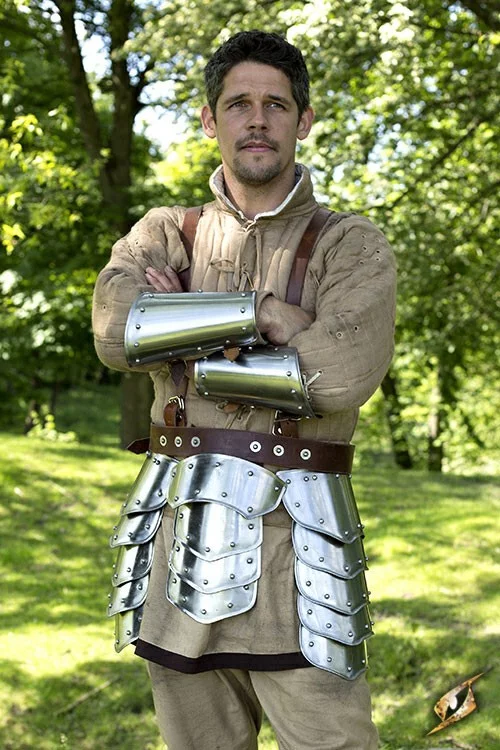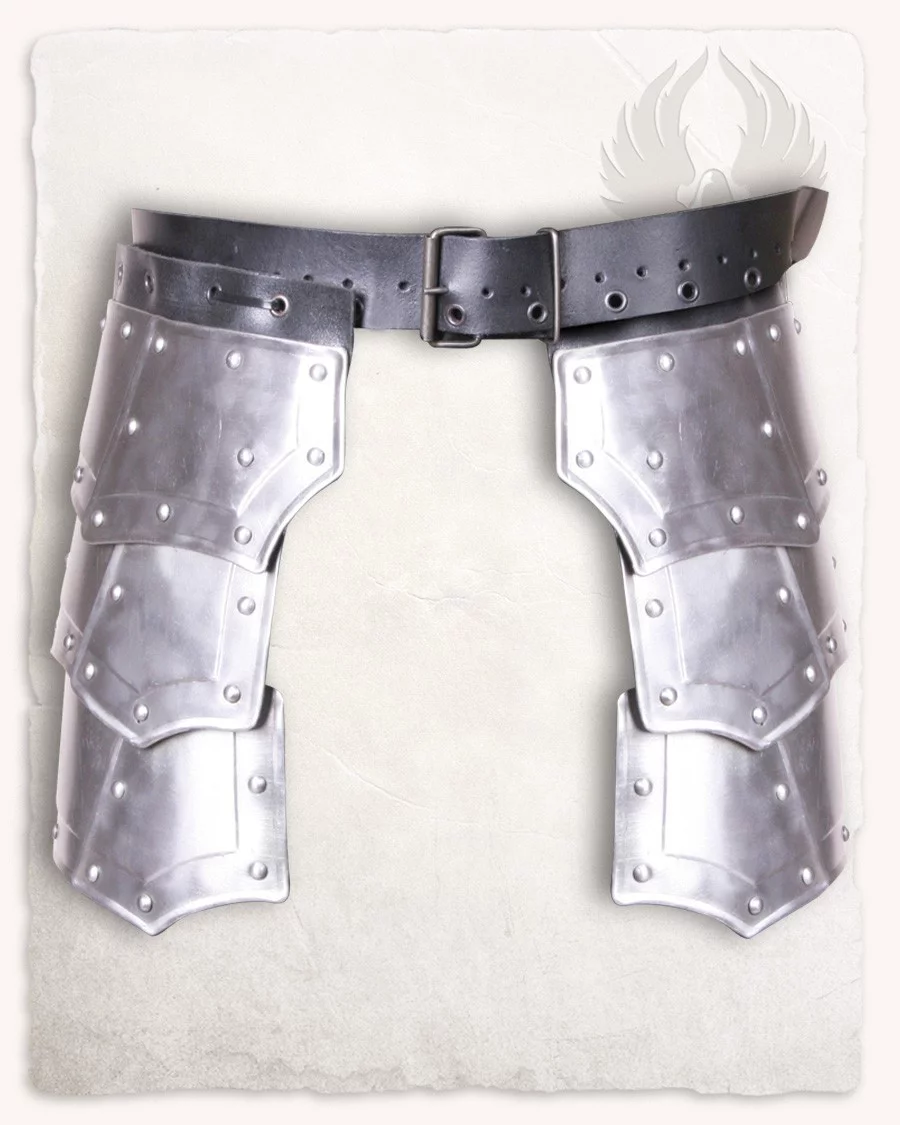What are Escarcelas or Tassets?
The escarcelas, also known as tassets, are distinctive elements of medieval armor that have captured the attention of historians and cultural heritage enthusiasts. Derived from the Italian term scarsella, these pieces, which flourished in the 14th and 15th centuries, have been recognized for their functionality and detailed artistic design.
Function of Escarcelas
The escarcelas were vital in protecting the knight in combat. Suspended from the belt and attached to the breastplate's fauld by straps and buckles, they covered the vulnerable gap between the breastplate and the cuisses. In this way, they safeguarded the groin, one of the most exposed areas to attacks on the battlefield.

Details and Evolution of Escarcelas
- Main Characteristics:
- They generally had a tile shape with vertical edges, offering suitable aesthetics and functionality.
- They were used symmetrically, although in some armors the right tasset could be shorter to facilitate horseback riding.
- Historical Evolution:
- Initially, they were fixed to the fauld, but they evolved to offer more mobility using straps.
- In the 15th century, the incorporation of Gothic designs allowed curved and radiated edges, improving their appearance.
- From the 16th century, an articulated version was created that provided knights greater freedom of movement.

Design and Materials in Escarcelas
- Design Variations:
- In armor for foot combat, it is common to see additional tassets that protect the coccyx.
- Some 15th-century armors incorporated small tassets on the sides for greater coverage.
- French armors before 1470 were of equal size, creating an effect similar to a plate skirt.
- Materials Used:
- Mainly metal, made of strong steel up to 1.2 mm thick, ensuring protection without sacrificing mobility.
- Leather was a popular alternative in historical reenactments and role-playing games, providing a lighter option.
Cultural Importance and Legacy
The escarcelas not only were fundamental in the physical protection of knights but also reflect a rich artisanal culture. They are a testament to the human ingenuity of the time, where functionality joined aesthetics, capturing the splendor of an era marked by chivalry and war. Their legacy continues to be an object of study and appreciation today, fascinating those who explore the history of medieval armor.
















